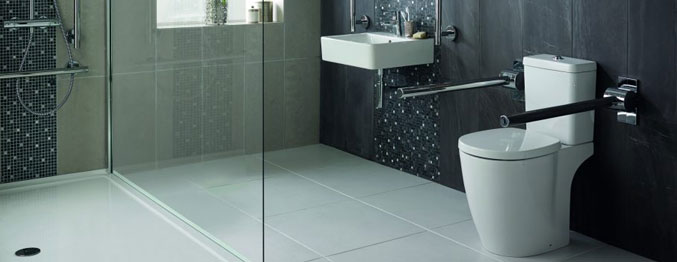
/ About us

Everyone dreams of a beautiful house with smart rooms in it. A bathroom is undoubtedly the most dangerous place in a home. A lot of injuries happen while bathing or showering. Even older people and children are also at risk. While designing a bathroom, we tend to neglect safety and focus on adding beauty to it. But, you need to consider the fact that it should be safe for use for all ages- young and old especially. You might think that adding some safety features in the bathroom will make it look institutional. However, with safe bathroom designs, you can ensure safety of the room without compromising on the beauty. This blog post caters to your need of designing a safe bathroom for all ages.
1. Space to Move
The area of bathroom is planned according to the home layout, but you should add more area to the bathroom. It will not only give you a spacious feeling, but will also be safer for children, disabled or older person. The older or disabled people can move freely in the bathroom with a walker or wheelchair. More space will also help you when dealing with babies and children. Another benefit that more space will give you is the increased storage capacity so that you can reach out to the things easily.
2. Sinks, Cabinets and Counters
The use of levers instead of faucets will be helpful for people with mobility issues. This will eliminate the need of turning and twisting. You can easily find different styles of levers in the market which will be fashionable as well as functional too. Keep the edges of sinks and counters round so that there is a reduced risk of cuts and bruises in case anyone falls. It will look stylish too. Also, keeping a countertop in a contrasting colour will benefit a person with balance issues or diminishing eyesight.
3. Bathroom Lighting
The bathroom should have proper lighting and it should be well-illuminated. Prefer to keep some high windows from where natural light can also reach the room.
4. Flooring
Selecting the type of flooring for a bathroom is an important task that needs to be done carefully. Always choose an anti-slip resistant tile or vinyl for bathroom considering the risk of falls that may occur due to a wet floor. More textured tile will also be less slippery. You can also go for small tiles that are embedded in grout as they will also be a good anti-slip resistant.
5. Showers and Baths
Most of the accidents happen near bathtubs or showers, so make sure that the surface is non-slippery. Having a separate attachment of shower head and a shower seat will make the bathing easy for children as well as older people who cannot stand for long periods. For overall bathroom safety, keep the water controls of a bathtub and shower close to the entry-point and shelving for towel, soap and shampoo at a reachable level in the shower/tub area.
6. Cleanliness is Key
For a safe bathroom design, consider surfaces that will be easy to clean. Opt for larger tiles for walls. Avoid steamy showers as the left moisture may cause issue for people with respiratory problems. Also place a vent fan so that the room can dry up after a shower or bath and no moisture is left behind.